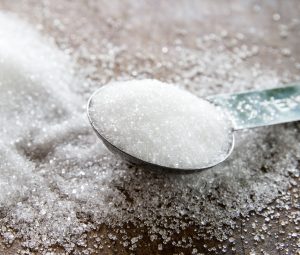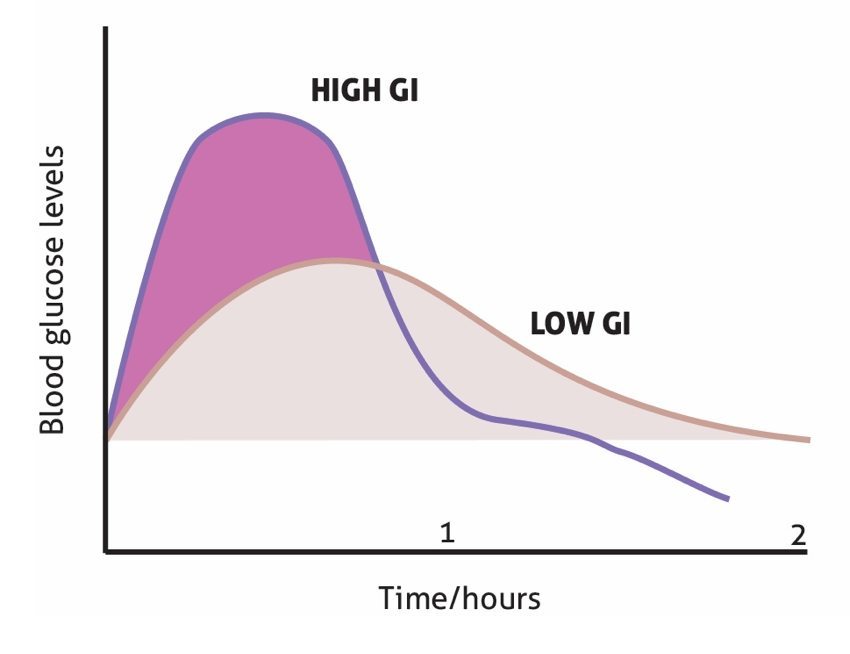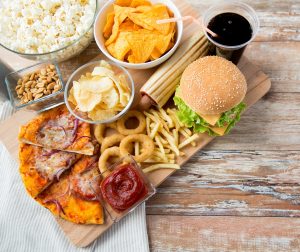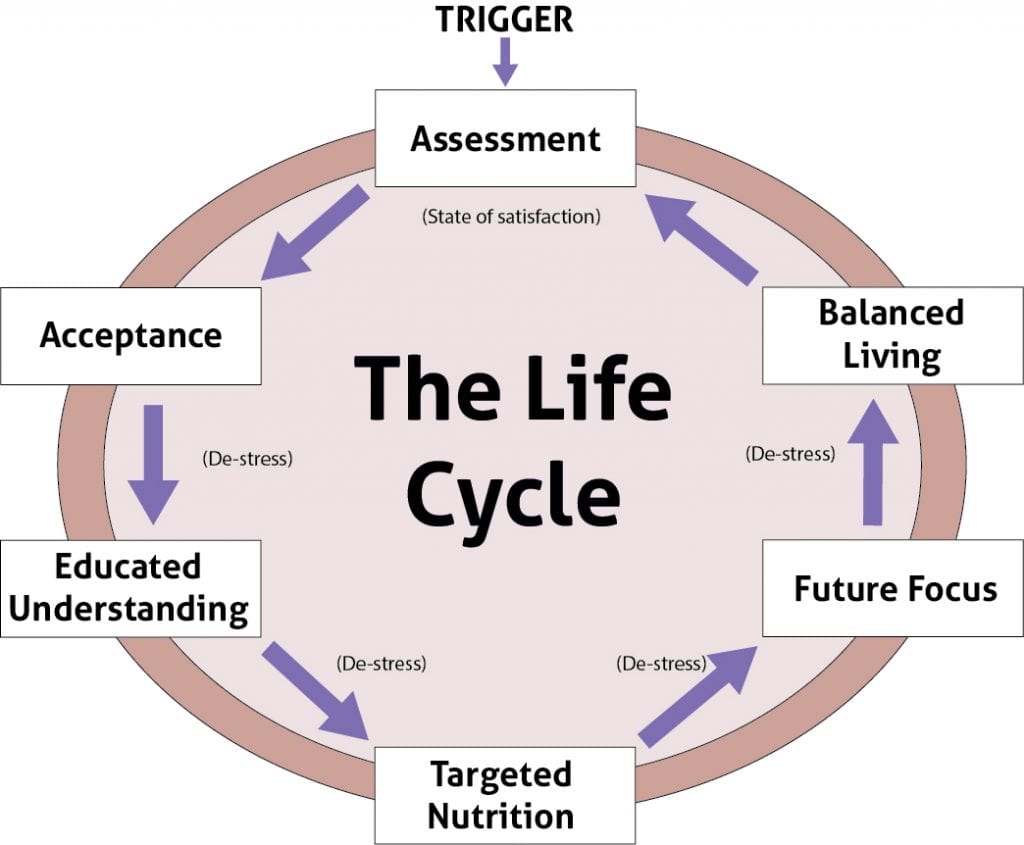Why Restricted Calorie Diets Make You Fat & What To Do Instead

Did you know that restricted calorie diets make you fat?
That’s right your diet could be working in reverse.
Indeed, restricted calorie diets don’t work. This is where you count calories, watch everything you eat, and starve yourself hungry (i.e. reduce the calories in) while also pushing yourself with hard exercise (i.e. increasing energy out) in order to lose weight.
The truth is there are numerous studies showing this. In fact, weight lost through diets is often regained within a year, sometimes with interest. And this is especially true during menopause.
Here’s why…
Restricted calorie diets tell the fat cells that starvation is approaching so to protect against starving they begin storing energy as fat. And this energy comes from food calories we consume. So it’s easy to see why we’ve been fooled into thinking that if we cut the calories we won’t get fat.
Calories in our food come mainly as fat, carbohydrates and protein. And carbs have 4 calories per gram, while fat 9 calories per gram. For this reason,too much dietary fat was once seen as the reason why we get fat.
 But attention has shifted from fat to sugar. And to understand why sugar makes us fat you need to know a little about digestion and metabolism.
But attention has shifted from fat to sugar. And to understand why sugar makes us fat you need to know a little about digestion and metabolism.
Fat and carbs are digested in our gut into fatty acids and simple sugars which get absorbed into our bloodstream. And the sugar goes straight through the gut lining causing an immediate increase in blood glucose.
Meanwhile, carbohydrates get broken down in the gut to simple sugars which are subsequently absorbed, pushing blood glucose levels higher.
The fats get broken down by lipase enzymes and bile into fatty acids and glycerol which are also absorbed. In fact, the fatty acids go to cells for either oxidation for energy or fat storage.
And the glycerol can also be converted into glucose. So, all food calories cause an increase in blood glucose, but at different rates. This rate is called the glycemic index (GI).
Sugars have a high GI because they cause a rapid rise in blood glucose (blood sugar). And some carbohydrates take a long time to break down and only raise blood glucose a small amount. Therefore, they are deemed low GI.

Why is blood glucose a problem?
Consistently high blood glucose leads to diabetes and metabolic syndrome.
Our bodies are designed to control blood glucose levels within a tight range of concentrations. And the control comes from the hormone secreted from the pancreas – insulin.
So, as blood glucose goes up, it’s detected by the pancreas which secretes insulin.
Every muscle, fat and liver cell in our body has receptors for insulin. Indeed, receptors are like the lock on the glucose door.
And insulin is the key that opens the lock and allows glucose to escape from the blood and into the cells. As a result, blood glucose levels lower to a normal range again.

The fat cells are important when it comes to insulin’s effects and weight gain.
 So when there is surplus energy from high GI foods converted to sugar and pushed into fat cells by insulin it gets converted to fat for storage. And when energy intake is too low, and blood glucose drops below the optimal zone, we get cravings and feel the need to eat – immediately!
So when there is surplus energy from high GI foods converted to sugar and pushed into fat cells by insulin it gets converted to fat for storage. And when energy intake is too low, and blood glucose drops below the optimal zone, we get cravings and feel the need to eat – immediately!
Additionally, if you have previously done a lot of calorie restricted dieting your fat cells have higher levels of fat storing and low levels of fat releasing enzymes. Interestingly, this is true for both men and women, so also partly explains the middle age spread in men as well.
What’s more, these insulin spikes are also dangerous.
The lock on the door gets fatigued when the insulin key hits it too often. So it gets worn out and increasingly more and more insulin is needed to open the door. This is called insulin resistance which leads to diabetes.
So what should we do?
Don’t restrict calories too much. But once you understand that these spikes in blood glucose drive insulin levels up, and insulin is the key to the door into the fat cell, you can look at balanced nutritional strategies.
 Avoid blood sugar spikes by cutting down or cutting out all added sugar. Say no to sugary drinks, even fruit juice which seems healthy is loaded with sugar. And steer clear of processed, packaged foods, most of which have added sugar. Start to notice the sugar levels on food labels and consciously avoid and reduce sugar.
Avoid blood sugar spikes by cutting down or cutting out all added sugar. Say no to sugary drinks, even fruit juice which seems healthy is loaded with sugar. And steer clear of processed, packaged foods, most of which have added sugar. Start to notice the sugar levels on food labels and consciously avoid and reduce sugar.- Look for low GI food sources that help with satiety – that feeling of satisfaction without being overly full. Protein and fibre are essential for satiety.
- Eat smaller meals more often. By keeping a regular flow of nutrients to our body we can avoid the binge that spikes blood glucose. Healthy high protein snacks between meals will help take the edge off your appetite and keep a slow release of energy through the day.
- Drink plenty of water throughout the day. Water plays an important part in weight management and deserves a page on its own. But for now know that water helps with satiety, avoiding cravings and hunger, and helping to keep body fluids hydrated and functional. In addition, it’s also important to help flush out the breakdown products of fat metabolism when you are burning fat.
Read my previous blog to learn how to take an assessment when you look in the mirror. Discover how to accept where you’re at and progress in a self-loving way. The best way to do this is with a balanced nutritional approach to managing how you look and feel.
In the meantime, avoid restricted calorie diets, start implementing the four steps above and you’ll feel more energy daily.







